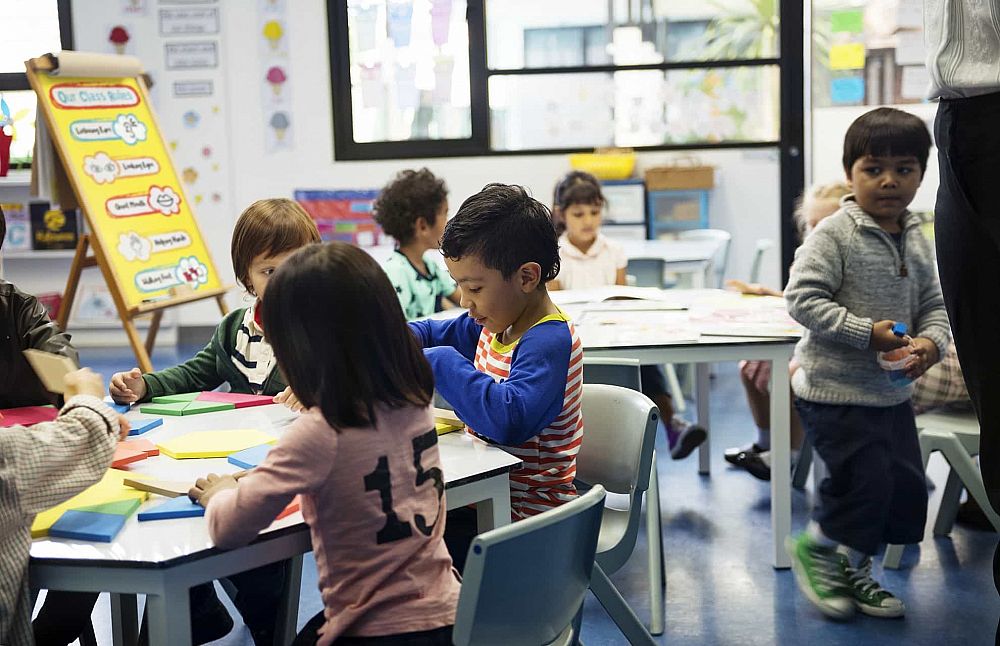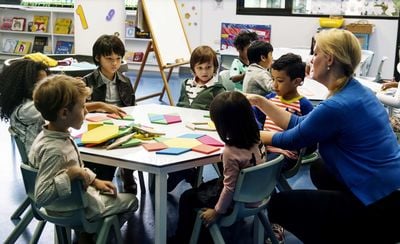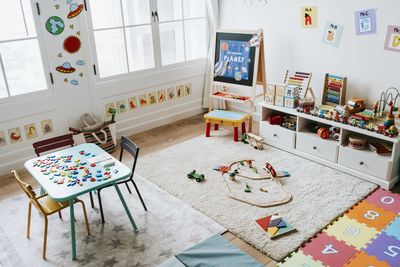Top Tips for Teaching EFL in a Kindergarten

The role of a kindergarten teacher can be very challenging yet highly rewarding. This is usually the first time that children have left the safety, comfort and familiarity of their own home and families, and it is often the first time that they have direct and regular contact with a second language that is completely foreign to them. This new environment needs to ensure that the children are completely at ease and ready to begin their language learning journey. So, what are the best methods for teaching EFL in a kindergarten?
Table of Contents
The Stages of Second Language Acquisition
Are you ready to teach English in a kindergarten?
This post was written by our TEFL certification graduate Chen M. Please note that this blog post might not necessarily represent the beliefs or opinions of ITTT.
The Stages of Second Language Acquisition
There are actually five stages that the students might go through on their language acquisition journey: Silent or Receptive Stage; Early Production; Speech Emergence; Intermediate Fluency; Advanced Fluency. The following methods can be used with students at all of these levels and stages of acquisition. Each method can also be practically adapted to fit all classrooms.
Also read: 10 Tips When Teaching English as a Foreign Language to Children
Total Physical Response (TPR)
TPR is a language acquisition method developed by psychology professor James Asher. TPR uses a combination of language and physical actions to engage students in the language learning process. TPR is a fairly low-stress strategy, which is one of the keys to its success. There's no pressure for a student to speak when using TPR. Instead they simply listen and respond in a physical manner. TPR can be a great precursor to verbal communication.

Also read: 4 Things To Keep in Mind When Teaching EFL in a Kindergarten
Using Authentic Materials
Authentic materials can be described as materials that have been created for native speakers and are used as teaching tools in an EFL classroom. This could include books, maps, newspaper articles, and recipes. It could also include videos and music. Any source of language designed for native speakers that is used to enhance a student's learning process could be considered as authentic material.
Also read: The Advantages and Disadvantages of Teaching English to Young Children
Displaying Visuals and Realia
Visuals and realia are one of the most effective ways to provide a relatable reference for our students. Visuals are just what you might think they are; A universal picture that accompanies your lesson. For instance, if you are teaching fruit names, have a picture or even better a real apple available to share with the student's. The use of visual aids is easy to plan and is very helpful for both teaching and learning. Using realia essentially means having a tangible object that your students can fully experience to help deepen their understanding.

Also read: 4 Super Easy Tips for Teaching Vocabulary to Young Learners
Play games
Games are a great way to make learning fun. Playing games in a competitive nature gives children a goal to accomplish. When you win a game, you have really done something and you can feel good about your success. Many kids love learning through playing and this helps them to practice their listening skills, their speaking skills and also helps the teacher to be more creative.
Also read: 11 Fun ESL Activities for Young Learners
Are you ready to teach English in a kindergarten?
Teaching English as a Foreign Language in a Kindergarten can be very challenging but also great fun. Coming in contact with a completely different language is not easy for non-native speakers, but having the interest to learn the language makes it a lot easier. How much interest the student's have will largely depend on the methods the teacher uses to present the course in order to make it fun and interesting.
Apply now & get certified to teach english abroad!
Speak with an ITTT advisor today to put together your personal plan for teaching English abroad.
Send us an email or call us toll-free at 1-800-490-0531 to speak with an ITTT advisor today.
Related Articles:
- 9 Small Details That Matter When Teaching EFL
- Why Taking a TEFL Course Is Highly Beneficial
- What's it Like Teaching EFL in a Kindergarten in Vietnam?
- The 7 Biggest Myths About Teaching Abroad Alone as a Woman
- How to Save Money While Teaching English Abroad?
- The Lowdown on Teaching English Abroad With a Family



